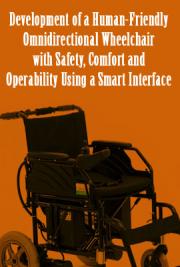Development of a Human-Friendly Omnidirectional Wheelchair with Safety, Comfort and Operability Using a Smart Interface
- / Home
- / Technology Books /

Author: Kazuhiko Terashima, Juan Urbano, Hideo Kitagawa, T
Downloads: 106
Pages: 51
Published: 10 years agoRating: Rated: 0 times Rate It
- 1 star
- 2 stars
- 3 stars
- 4 stars
- 5 stars
Book Description
1. A local map was built around the OMW by using range sensors. This local map allows knowing the distance from the OMW to the surrounding obstacles in a circle with a radius of 3 [m]. The information provided by the local map, as well as the information of velocity of the OMW were used for varying the stiffness of a haptic joystick that sents information to the hand of the occupant of the OMW. As the distance to the nearer obstacles decreases and the velocity of the OMW increases, the stiffness of the haptic joystick increases, and vice versa. By using the haptic joystick, the occupant of the OMW was able of achieving safety navigation by avoiding collision against obstacles. The sensing system to obtain the surrounding environmental information for any arbitrary direction in real time was built. The algorithm to choose only environmental information existing toward the moving direction of OMW for navigation support system was proposed. Using the constructed environmental recognition system, operation assistance system that informs the danger level of collision to the operator was given. Navigation guidance haptic feedback system that induces an evasive movement to navigate OMW toward the direction without obstacle was proposed. A power assist system was attached to the rear part of the OMW in order to provide support to the attendants of the OMW, specially in the case when the attendant of the OMW is a senior citizen. The operability of the OMW with power assistance was improved by using fuzzy reasoning, but it was found that the membership functions of the fuzzy reasoning system had to be tuned in order to respond to the individual characteristics of each attendant. A neuro-fuzzy system (ANFIS) was used for speeding the tuning of the fuzzy reasoning system of the OMW by using the input data of the attendants. A touch panel with display was attached to the rear part of the OMW for providing a human-friendly interface for the input of the teaching data of the neurofuzzy system. Moreover, this touch panel can be used by the attendant for knowing the difference between the desired motion and the real motion of the OMW, and then adjust his behavior according to his observation. The operability of the OMW was improved by using the combined system ANFIS-touch panel. The natural frequencies of the OMW and the natural frequencies of the head and torso

